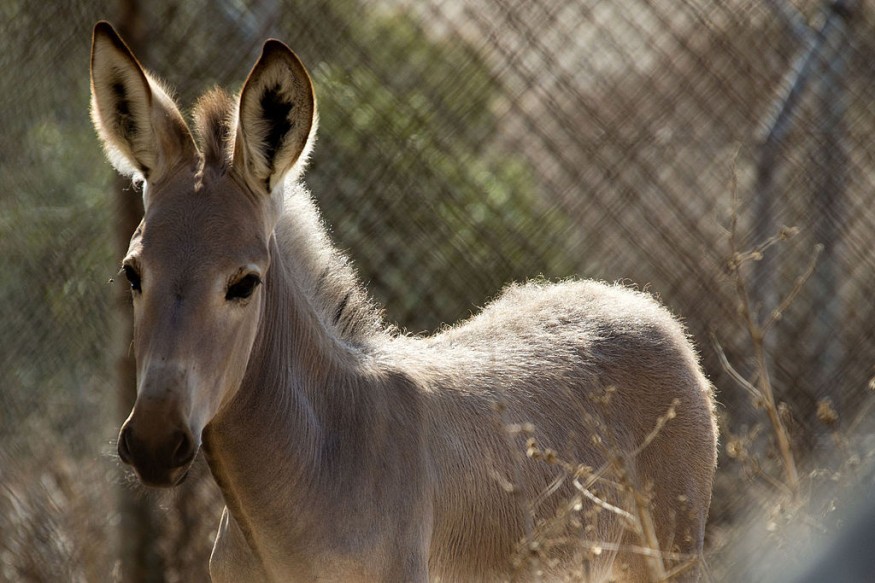
Researchers from Paris said that people from ancient Mesopotamia have been breeding super-strength donkeys based on the 4,500-year old skeletons they found in a burial site at Umm el-Marra in northern Syria. The team believes these are skeletons of the first hybrid animal called kunga.
They are a cross between female donkeys and male Syrian wild asses, proving that people in the past have been crossbreeding domestic animals. People do not ride on the back of kungas. Instead, they use them to transport goods and tow four-wheeled war wagons as seen in the famous "Standard of Ur," a Sumerian mosaic.
Six weeks old African wild ass foal 'Yehuda' looks around at the Zoological Center of Tel Aviv-Ramat Gan, on October 24, 2013.
How The First Animal Hybrid in History Was Done
Paleogeneticists from the Institut Jacques Monod in Paris, France, said that kungas were F1 hybrids resulting from crossbreeding female domestic donkeys and male wild asses. MailOnline reported that large male kungas were used to pull carriages of "nobility and gods."
Due to their large size, they are more used in towing four-wheeled war wagons compared to donkeys. That was 500 years before horses came to the region, according to a previous finding published in 2020.
Clay tablets and seals with syllabic writing called cuneiform from 4,500 years ago mentioned the prestigious equids with a high market value that cost up to six times the price of a donkey at that time and were intentionally bred in Mesopotamia during the Bronze Age. But the first time they saw the skeletons, they were not aware yet of the kungas.
Scientists conducted DNA sequencing with polymerase chain reactions (PCR) to analyze mitochondrial DNA of the mother and Y chromosome of the father. They found that the skeletons in the burial site were indeed from kungas that are like horses, donkeys, and wild asses of the hermione family. Analyses showed that skeletons inUmm el-Marra burial site were first-generation hybrids of kunga.
However, kungas were sterile and hermione lived in the wild. To continue their lineage, ancient people had to domesticate a female kunga with a captured hermione rather than domesticate wild horses. In return, this will combine the qualities of the two parents to produce stronger and faster offspring.
ALSO READ: Dinosaur Footprints Discovered in Wales, Imprint Made By 200-Million-Year-Old Triassic Sauropod
Sumerians Preferred Kungas
Since kungas have the combined abilities of both donkeys and wild asses, Sumerians prefer using them. Archaeologist Fiona Marshall from Washington University in St. Louis called the study's findings "enormously significant" because it showed what people in the past were after.
She told the New York Times that while donkeys were tamer, ancient people also wanted the qualities of a wild animal. They were looking for a strong animal with high speeds and at the size of wild asses, so the crossbred kunga was born. Previous documents showed that kungas were better than horses in terms of speed.
Despite this critical discovery, scientists do not know how to put the knowledge from this study into practice since wild asses became extinct in the 1920s, although donkeys still exist today.
They published the full findings of their study, titled "Ancient DNA shows domestic horses were introduced in the southern Caucasus and Anatolia during the Bronze Age," in the journal Science Advances.
RELATED ARTICLE: Horse Skeleton From the Ice Age Found in Utah Backyard Isn't What it Seems
Check out more news and information on Paleontology in Science Times.
© 2025 ScienceTimes.com All rights reserved. Do not reproduce without permission. The window to the world of Science Times.












